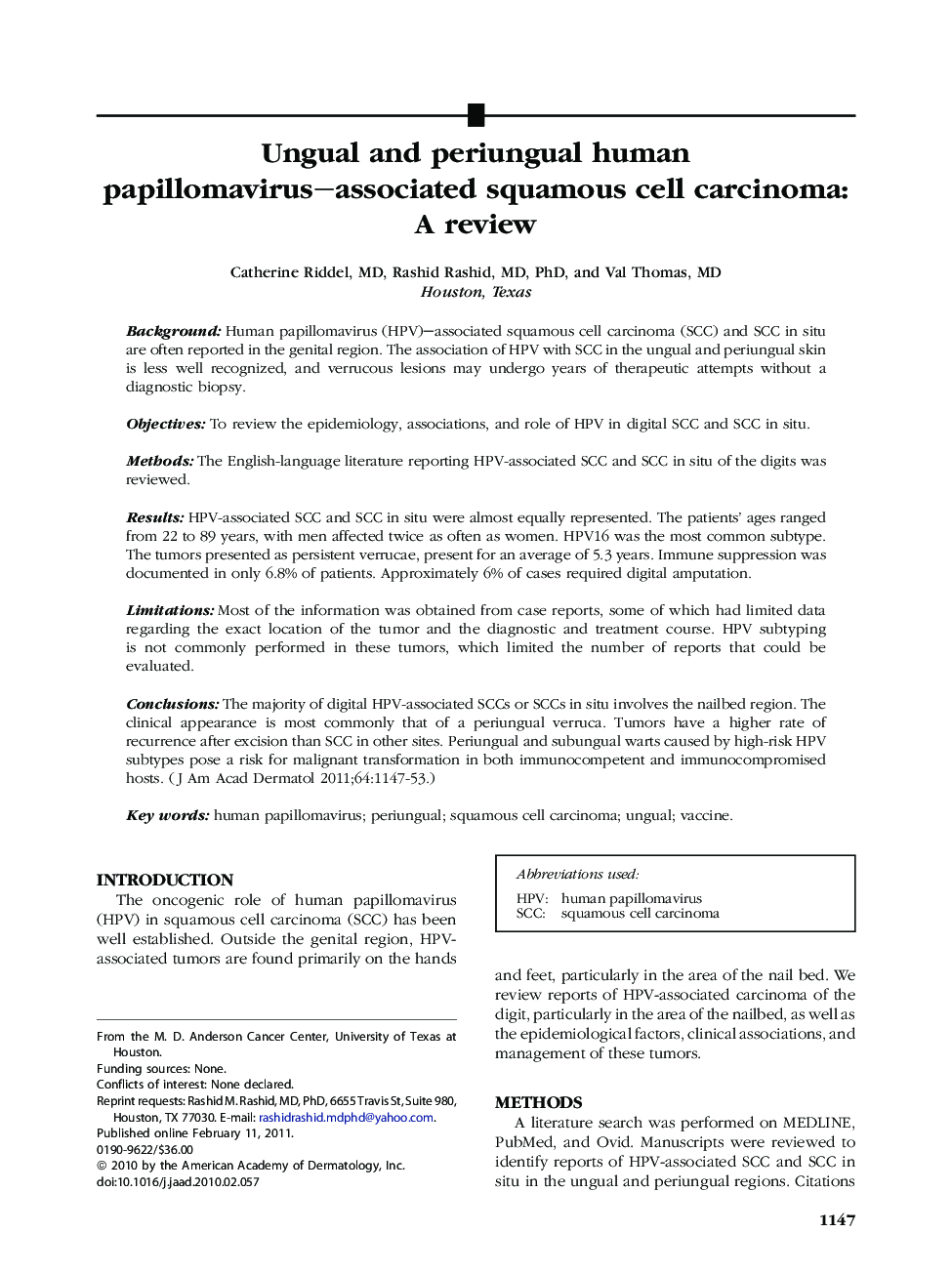| Article ID | Journal | Published Year | Pages | File Type |
|---|---|---|---|---|
| 3208249 | Journal of the American Academy of Dermatology | 2011 | 7 Pages |
BackgroundHuman papillomavirus (HPV)–associated squamous cell carcinoma (SCC) and SCC in situ are often reported in the genital region. The association of HPV with SCC in the ungual and periungual skin is less well recognized, and verrucous lesions may undergo years of therapeutic attempts without a diagnostic biopsy.ObjectivesTo review the epidemiology, associations, and role of HPV in digital SCC and SCC in situ.MethodsThe English-language literature reporting HPV-associated SCC and SCC in situ of the digits was reviewed.ResultsHPV-associated SCC and SCC in situ were almost equally represented. The patients' ages ranged from 22 to 89 years, with men affected twice as often as women. HPV16 was the most common subtype. The tumors presented as persistent verrucae, present for an average of 5.3 years. Immune suppression was documented in only 6.8% of patients. Approximately 6% of cases required digital amputation.LimitationsMost of the information was obtained from case reports, some of which had limited data regarding the exact location of the tumor and the diagnostic and treatment course. HPV subtyping is not commonly performed in these tumors, which limited the number of reports that could be evaluated.ConclusionsThe majority of digital HPV-associated SCCs or SCCs in situ involves the nailbed region. The clinical appearance is most commonly that of a periungual verruca. Tumors have a higher rate of recurrence after excision than SCC in other sites. Periungual and subungual warts caused by high-risk HPV subtypes pose a risk for malignant transformation in both immunocompetent and immunocompromised hosts.
